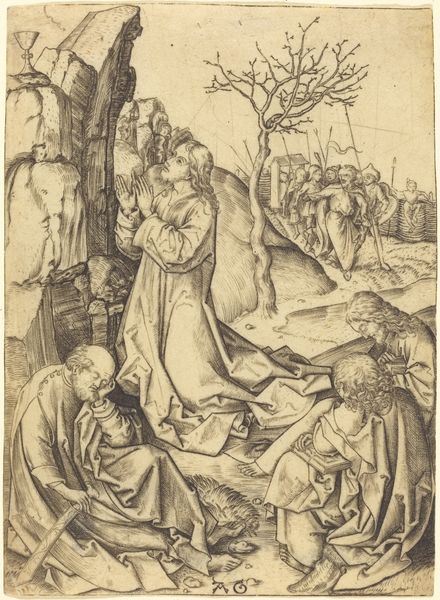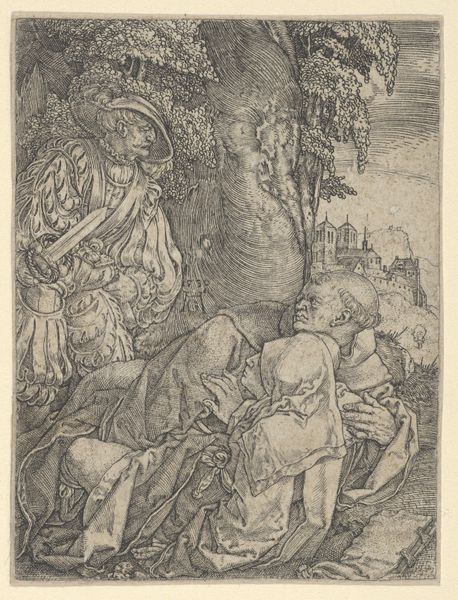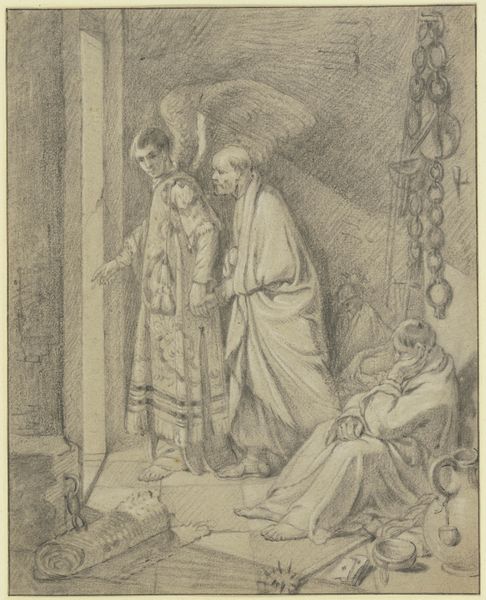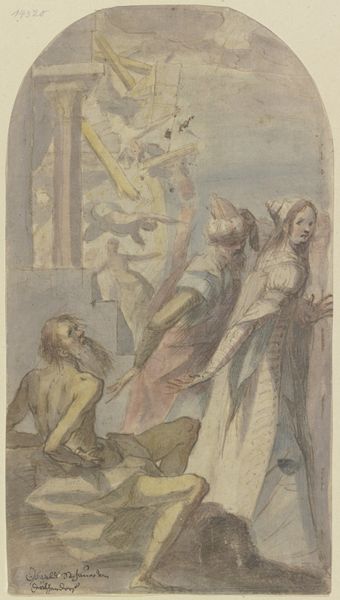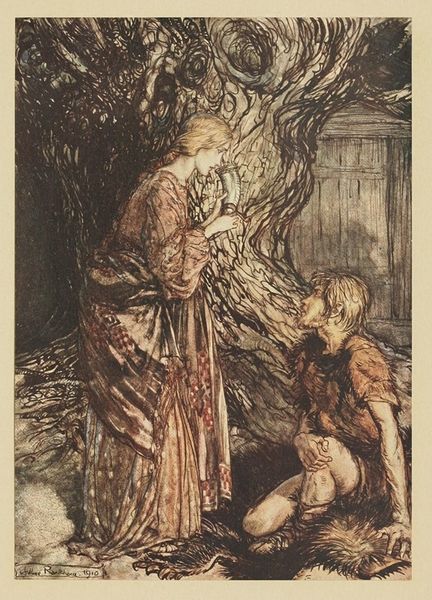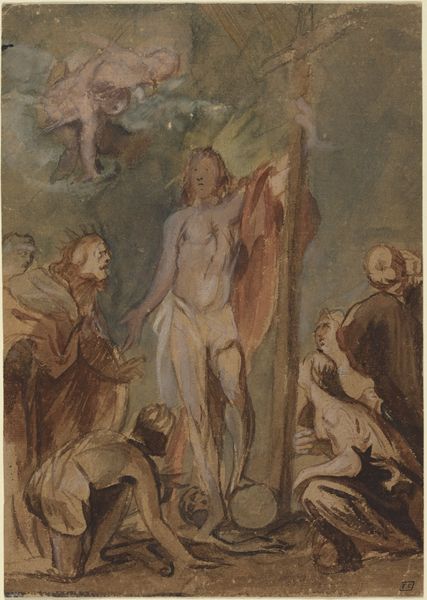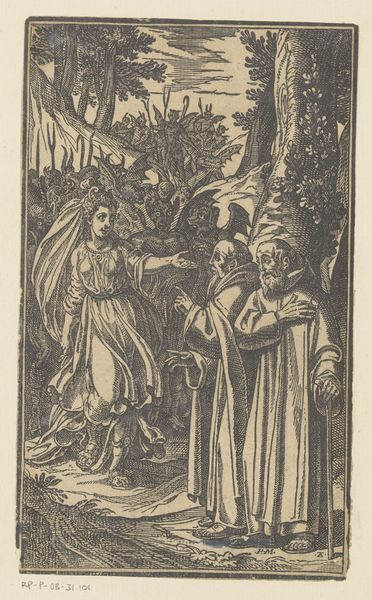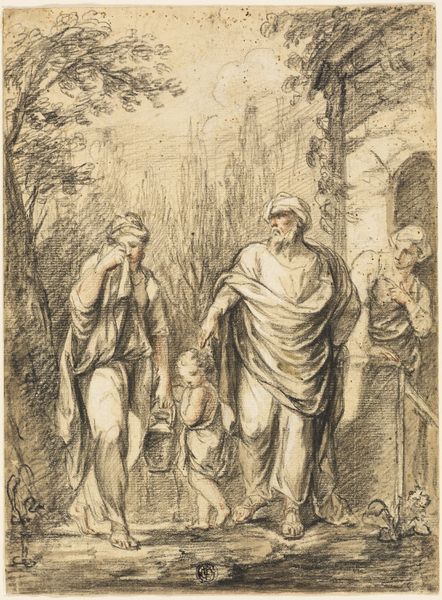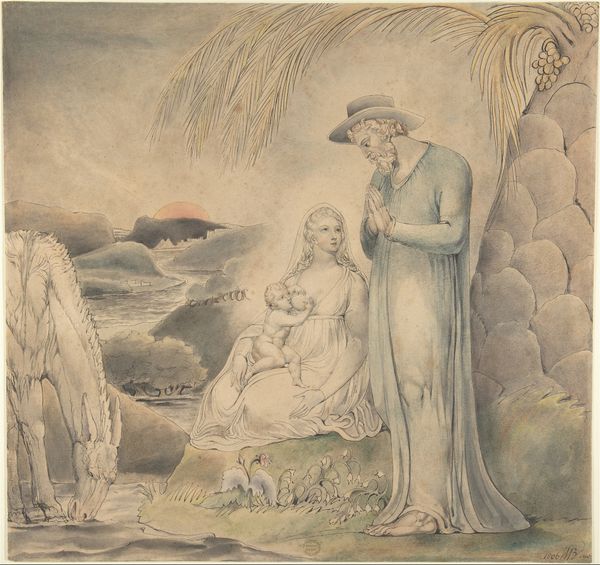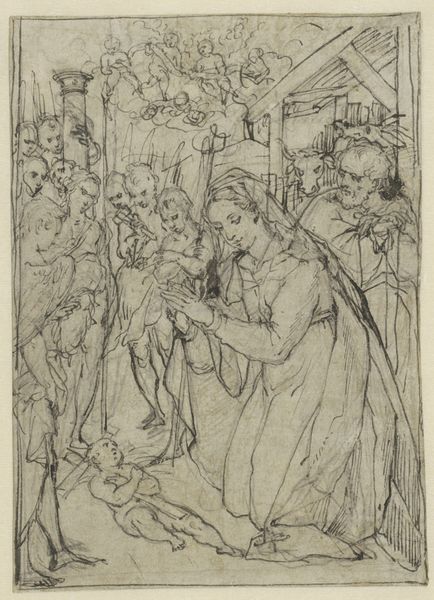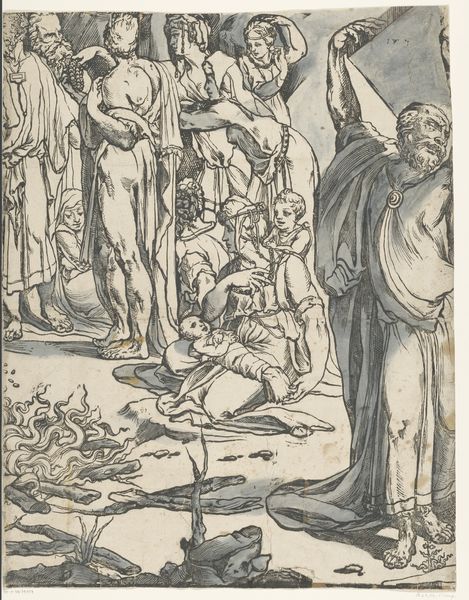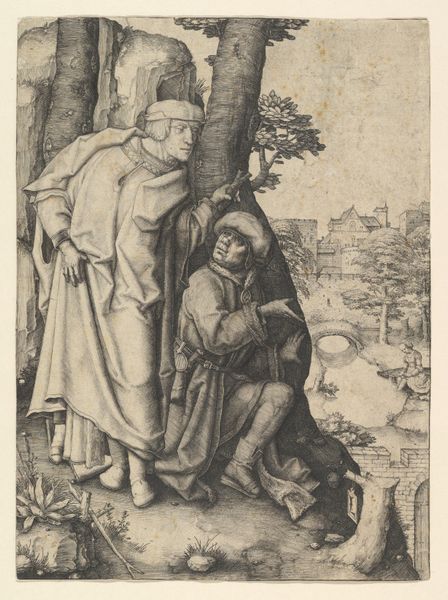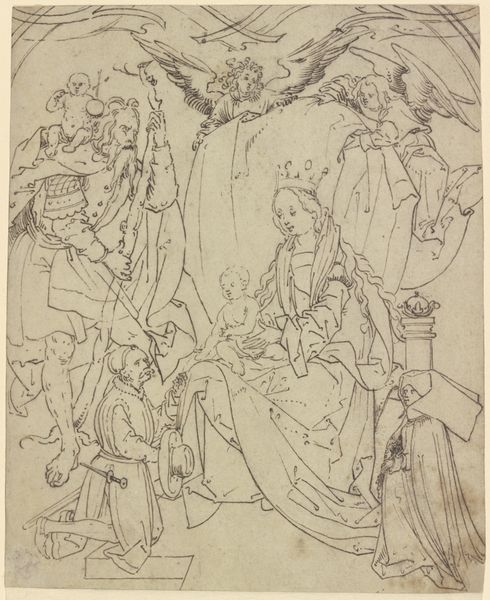
Copyright: Public Domain
Editor: Frederic Leighton's "The Arts Paying Homage to Spring," created around 1852 using watercolor, chalk, and colored pencils, has this ethereal, dreamlike quality. What symbols do you notice at play here, influencing how we read this piece? Curator: It’s tempting to see Spring as simply allegorical, but the imagery works on a deeper level. Consider the figures’ poses – supplication, reverence. What do they evoke for you? Notice also the medieval costuming contrasting with the classical drapery on the figure of Spring. This isn't just about seasons; it's about a revival, a cultural rebirth that looks to different periods for inspiration. What feeling does the presence of the knight evoke, with his toast? Editor: A festive feeling. A sense of looking backward to the Middle Ages and forward at the same time, maybe? The homage looks more like asking for something, not praise exactly, and it comes from figures we don't see clearly. It all seems pretty complicated! Curator: Precisely. Leighton uses familiar symbols—spring, art, knighthood—but subverts them. Is it homage or supplication? Who benefits? Where does true power reside? These questions, embedded in the iconography, invite a more critical reading. The slightly muted tones add a sense of nostalgia or a dream that we're recalling, changing as we look. Editor: That really shifts my understanding! I was ready to take it at face value, as just a pretty, historical scene. Now, I see there is some active commentary on the relationship of artists and culture happening, and also of culture between each period it passes. Curator: Seeing past surface-level interpretations allows the viewer to engage more fully in a visual conversation and consider how images resonate across time. The choice to unite them together as one image may imply a deeper significance than expected at first glance. Editor: I'll definitely look more closely for those layered meanings in other works now, seeing the figures less for who they appear to be, but the cultural roles they occupy, their social standing as symbolic gestures in art.
Comments
No comments
Be the first to comment and join the conversation on the ultimate creative platform.
